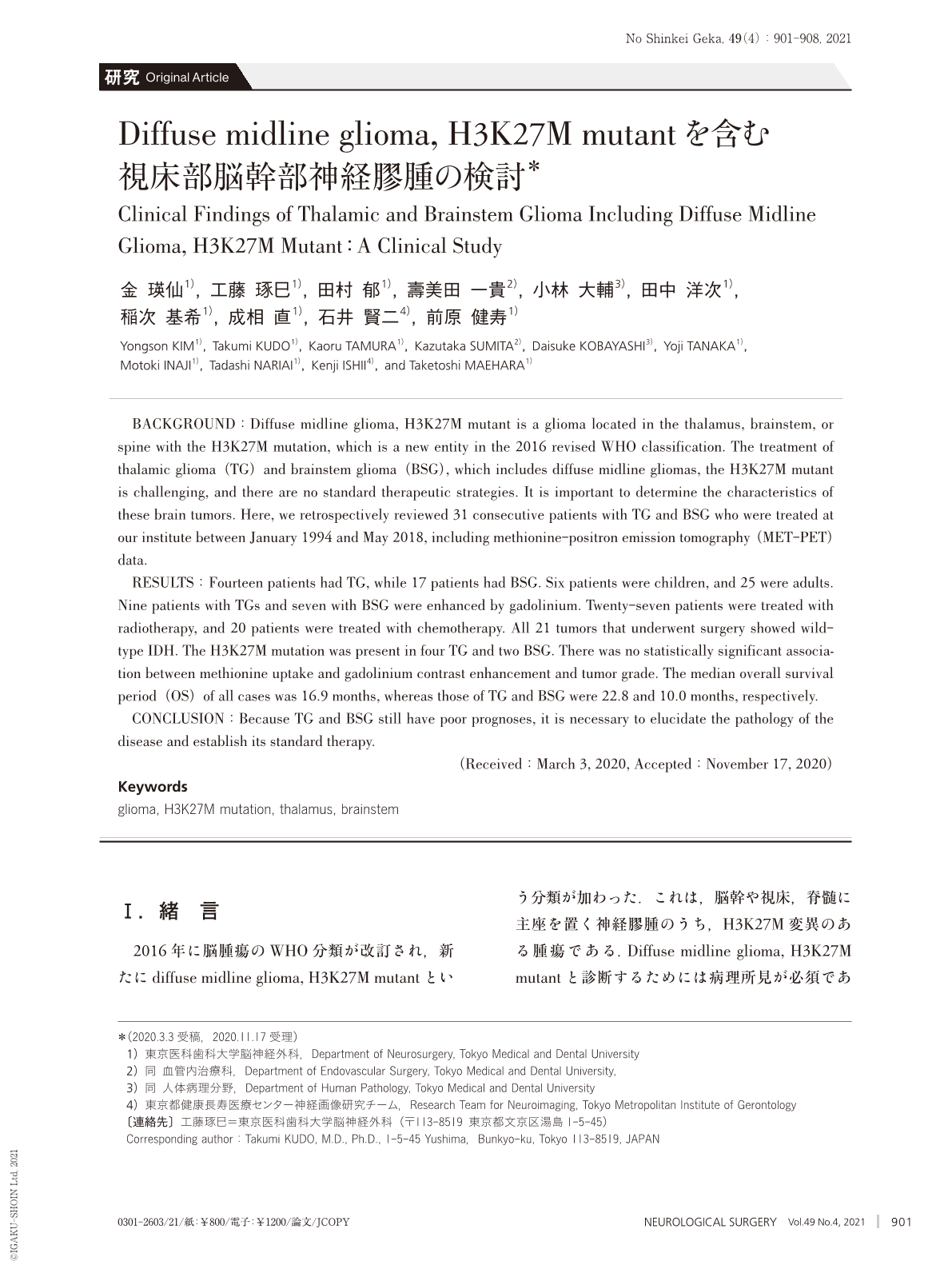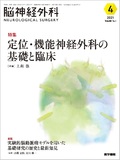Japanese
English
- 有料閲覧
- Abstract 文献概要
- 1ページ目 Look Inside
- 参考文献 Reference
Ⅰ.緒 言
2016年に脳腫瘍のWHO分類が改訂され,新たにdiffuse midline glioma, H3K27M mutantという分類が加わった.これは,脳幹や視床,脊髄に主座を置く神経膠腫のうち,H3K27M変異のある腫瘍である.Diffuse midline glioma, H3K27M mutantと診断するためには病理所見が必須であるが,特に脳幹部神経膠腫は部位の特性上,手術を施行せずに画像所見から診断することも多い.そのため病理学的な所見が得られていないことが多く,これらのなかには,diffuse midline glioma, H3K27M mutantとそれ以外の神経膠腫が混在している可能性がある.Diffuse midline glioma, H3K27M mutantを含む視床および脳幹部神経膠腫は予後が悪く,また標準的治療法は未だ確立されていないためその病態の把握は重要であるが,上述の通り本疾患では病理学的な検討を十分に行えないことが多く,その病態は十分には解明されていない.
11C-methionine-positron emission tomography(MET-PET)は神経膠腫の診断に最も有用な検査の1つで,われわれは神経膠腫の診断と管理におけるMET-PETの有用性について報告してきた7).神経膠腫の診断においては,ガドリニウムによるMRIでの造影所見が汎用性が高く頻繁に使用されているが,blood-brain barrier(BBB)の破綻のない症例においては悪性度の高い神経膠腫であっても造影効果が乏しいことがある.一方でMET-PETではメチオニンが細胞増殖や血管増生している部分へ集積するため悪性神経膠腫の診断に有用で,また神経膠腫の悪性度およびその予後の予測が可能である.しかし視床および脳幹部神経膠腫におけるMET-PETの有用性についての報告は少ない.
BACKGROUND:Diffuse midline glioma, H3K27M mutant is a glioma located in the thalamus, brainstem, or spine with the H3K27M mutation, which is a new entity in the 2016 revised WHO classification. The treatment of thalamic glioma(TG)and brainstem glioma(BSG), which includes diffuse midline gliomas, the H3K27M mutant is challenging, and there are no standard therapeutic strategies. It is important to determine the characteristics of these brain tumors. Here, we retrospectively reviewed 31 consecutive patients with TG and BSG who were treated at our institute between January 1994 and May 2018, including methionine-positron emission tomography(MET-PET)data.
RESULTS: Fourteen patients had TG, while 17 patients had BSG. Six patients were children, and 25 were adults. Nine patients with TGs and seven with BSG were enhanced by gadolinium. Twenty-seven patients were treated with radiotherapy, and 20 patients were treated with chemotherapy. All 21 tumors that underwent surgery showed wild-type IDH. The H3K27M mutation was present in four TG and two BSG. There was no statistically significant association between methionine uptake and gadolinium contrast enhancement and tumor grade. The median overall survival period(OS)of all cases was 16.9 months, whereas those of TG and BSG were 22.8 and 10.0 months, respectively.
CONCLUSION:Because TG and BSG still have poor prognoses, it is necessary to elucidate the pathology of the disease and establish its standard therapy.

Copyright © 2021, Igaku-Shoin Ltd. All rights reserved.


